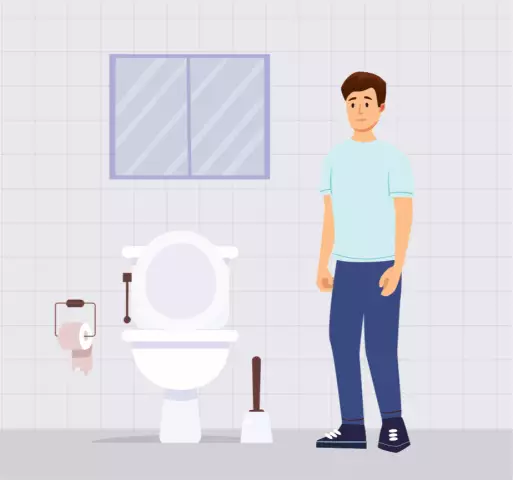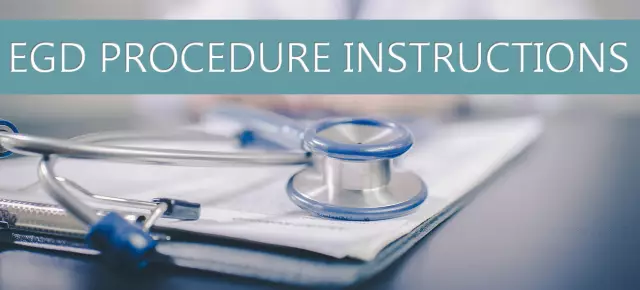- Author Rachel Wainwright [email protected].
- Public 2023-12-15 07:39.
- Last modified 2025-11-02 20:14.
Irrigoscopy

An irrigoscopy is a medical x-ray of the colon. Today, it is the safest method that allows you to identify a number of diseases: intestinal cancer, polyps, ulcerative colitis, Crohn's disease, diverticula, etc.
Indications for irrigoscopy
Doctors recommend an intestinal irrigoscopy to clarify the diagnosis for patients with the following symptoms:
- hemorrhage from the anus;
- pain or discomfort in the anus;
- persistent constipation or diarrhea;
- discharge of pus or mucus from the anus;
- ulcerative colitis;
- Crohn's disease;
- suspected neoplasms in the intestine;
- fistulas;
- diverticulosis;
- violation of the formation of the intestine.
It is also necessary to do an irrigoscopy in cases where it is not possible to conduct a colonoscopy (diagnosis of the colon with a colonoscope), or if its results do not give a complete picture.
It is strongly advised to do an intestinal irrigoscopy for patients with suspected cancer, as this study allows the most accurate identification of tumors growing in the intestinal lumen.
Contraindications
Doctors will forbid to do an intestinal irrigoscopy when:
- rapid ulcerative colitis;
- pregnancy;
- megacolone of a toxic nature;
- tachycardia and some other diseases that can significantly worsen the patient's condition.
Preparation for irrigoscopy
The accuracy of the research results is largely influenced by the correct preparation for an irrigoscopy, which implies adherence to a special diet and preliminary cleansing procedures for the intestines.

1. Diet - the first stage of preparation for irrigoscopy.
Two to three days before the procedure, the patient excludes all slag products from his diet, as they can cause bloating. It is also forbidden to eat fresh vegetables (cabbage, carrots, beets, legumes), herbs, some cereals (oatmeal, millet, pearl barley), fruits (oranges, apples, bananas, peaches, apricots), dark flour bread. Meat broths should not be very rich, and they recommend steaming (or boiling) all dishes. Lunch on the eve of the bowel irrigoscopy should be light, dinner and breakfast are completely excluded.
2. Cleansing the intestines - the second stage of preparation for irrigoscopy.
With the help of irrigoscopy, you can get very accurate examination results, provided that the human intestine is completely cleared of feces, so diet alone is not enough, with the help of special laxatives or enemas, you need to cleanse the intestines. A cleansing enema is done in the evening and in the morning. About a liter of water is taken into the intestine at a time and enemas are repeated until the washings are clean without any impurity of feces.
Colon cleansing enemas can be replaced with laxatives such as Fleet, Duphalac or Fortrans. They are taken according to the instructions, starting in the evening before the procedure and ending in the morning on the day of the examination.
Carrying out the procedure using a device for irrigoscopy
Irrigoscopy takes from 15 to 45 minutes, the procedure itself is almost painless.
Barium sulfate - a contrast agent - is mixed with water (400 g of a substance per 1.5 - 2 liters), the mixture is heated to 35 degrees. The contrast is administered to the patient using a special device for irrigoscopy, which is called the Bobrov apparatus (it is also used for intestinal lavages).
This irrigoscopy device consists of a 1 or 2 liter can with a tightly closed lid and two tubes connected to it. At the end of one there is a rubber bulb, which supplies air to the can, and at the end of the other, a disposable system is put on for conducting an irrigoscopy, through which a contrast agent is injected into the intestine.
The contrast is poured into a jar, then with the help of a pear, the doctor injects air into it, under the influence of which an excess pressure is created under the lid, pushing the barium suspension along the tube, gradually filling the intestines.
The study itself is performed as follows: under X-ray control, the large intestine is gradually filled with a suspension and sighting and survey images of all its departments are made in various positions of the patient (lying on his back, on his side, on his stomach). After that, two more survey images are taken: 1 - after complete distribution of barium, it allows you to assess the diameter of the lumen, the shape and location of the large intestine; 2 - after removing the tube and emptying the intestines, to examine the relief of the mucous membrane and determine the functional activity of the organ.
And at the last stage, the double contrasting technique is performed. And if for the previous procedure it was possible to use a conventional enema, then this is performed only with a device for irrigoscopy. For this purpose, the intestine is dosed with air. The mucous membrane is still covered with a thin layer of contrast, and the air straightens the folds, which makes it possible to study the structure of the wall in more detail. It is the double contrast method that is decisive in the diagnosis of ulcers, polyps and oncological processes in the colon.
Complications of intestinal irrigoscopy
With the correct procedure, taking into account contraindications, the patient does not experience serious complications. Within 3 days, it is possible to clarify feces due to barium and stool retention, in which case the patient is advised to put an enema or take a laxative.
In rare cases, barium embolism occurs (i.e., the formation of barium granulomas), perforation of the intestinal wall, and even less often - contrast leakage into the retroperitoneal space or into the abdominal cavity.
Found a mistake in the text? Select it and press Ctrl + Enter.






